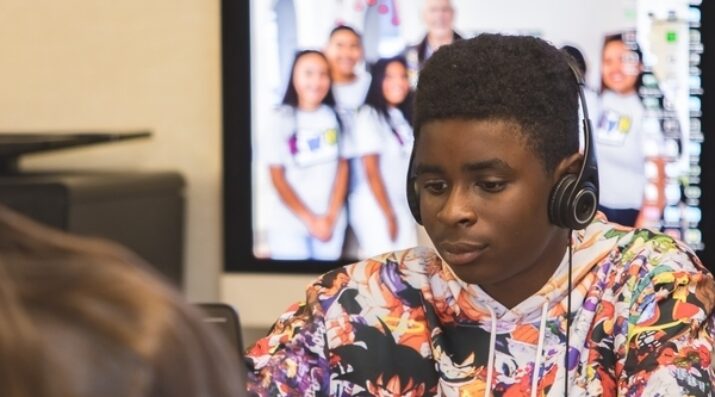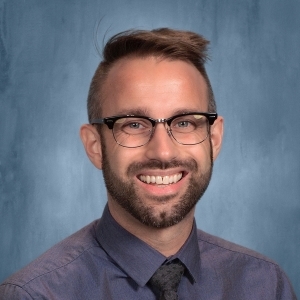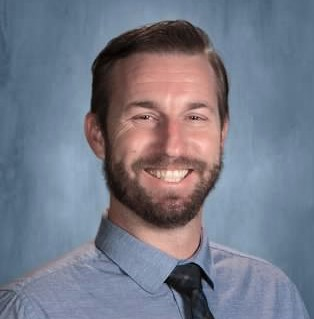Personalized Learning in Social Science: Skills, Agency, and Relevance
Topics

We’ve all had the experience of truly purposeful, authentic learning and know how valuable it is. Educators are taking the best of what we know about learning, student support, effective instruction, and interpersonal skill-building to completely reimagine schools so that students experience that kind of purposeful learning all day, every day.
Personalized learning looks different in high school electives than in core subjects like history, but the goals are the same.
Across the six-years of our journey to transform classrooms at Mission Vista High School (MVHS), our faculty and staff have been working together so that our students can have a voice in their learning, co-create learning opportunities with their teachers, work with peers to co-construct learning and understanding, and create their own self-directed, personalized pathways. To build a shared understanding of personal learning (PL), our school adopted this definition from Allison Zmuda, Greg Curtis, and Diane Ullman in Learning Personalized: The Evolution of the Contemporary Classroom:
“A progressively student-driven model of education that empowers students to pursue aspirations, investigate problems, design solutions, chase curiosities, and create performances.”
Robert Chodola is one of the social science teachers at MVHS who also teaches our senior capstone class—My Vision Personalized (MVP)—and a course devoted to the college application process. He is forthright about the difference between personalizing an elective and applying PL principles to a subject area like history.

Robert Chodola
The electives, he says, can be “more personalized and focus on soft skills and real-world skills because they have less curricular structure.”
As Robert explains, the College Application Seminar “is 99 percent personalized simply because every single thing they face funnels through the learner and their needs for their college journey.” With an emphasis on “making sure they understand who they are,” students embark on a personalized path that includes personality tests like the RIASEC assessment and frequent personal reflections, as well as research into careers and college majors.
- College Applications Seminar syllabus - Explore details about the content of the seminar as well as educator and student responsibilities.
“We do a lot of work to establish the importance of knowing your skills, your personality, your identity at the beginning,” Robert explains. “They start to build a language for talking about their soft skills and their strengths and their interests and their values. And then they start to make choices about what sort of careers they see as potential. So that before we ever get to applications, they have an array of colleges they think might fit with their major, which might fit with their career.”
- Task Description - Learn more about these written reflections.
Listen to Robert share more about personalized learning in the college learning experience at MVHS:
In contrast to these learner-centered electives, Robert acknowledges that content-focused courses—especially Advanced Placement (AP) history courses—have been more of a “struggle” to personalize. Even so, Robert has found ways to implement PL by adopting a skills-based approach to his subject area, providing opportunities for learner choice and ownership of success, and by exploring historical concepts through the lens of current and relevant issues.
Leveraging five key standards from the Stanford History Education Group (SHEG), learners in Robert’s class use primary source documents to learn how to read and think like a historian. Students develop skills like close reading, examining context, and seeking out reliable corroboration from other sources. He explains that students are “not just reading the textbook like a history student or reading Wikipedia like a history buff or reading analytical paragraphs like a history teacher, but are using the skills that actual historians and fact checkers need to use to understand, based on reliable sources, how we construct the past.”
Because such skills can be applied to multiple contexts, Robert is able to provide more choices and flexible options for students to demonstrate their learning. According to him, students practice using primary sources each day “in a low stakes environment.” The assessments, then, are about “demonstrating how well you understand these skills in a slightly more formal setting,” he says.
For the assessment, he explains, “They choose sources that perhaps resonated most with them when we did them in class” and then annotate, close read, and analyze them, examining the author’s background and potential biases and explaining how specific quotations support the author’s claim or belief. Learners also select another primary source that explores the same thematic issues. “Students choose the lens of corroboration and then explain how those sources support and complicate each other as well.” In keeping with Robert’s approach to grading, he adds that, “Any of the assessments they do, I give them feedback. Then they can resubmit it, and I’ll regrade it and give them the score if they improve.”
Robert also makes learning about history personally relevant to students by examining historical events through the lens of what is currently happening in the world learners know. “For the last couple of years, because of COVID, I completely reframed how we study the Great Depression, the New Deal, and World War II,” he says. “I reframed all the essential questions to be focused on ‘How does society and how does the government respond during a national crisis?’”
“I tried to bring in that sense of the real world,” Robert explains. “We’re living through a crisis right now, whether we want to or not, and we can take these exact same questions, decontextualize them from what happened nearly a hundred years ago. With that framing in mind, they could see how the world around them is governed by the same principles as what we look at in the past.”
Related Posts
Supporting Students to Drive Their Learning in ELA - MVHS English department chair Michelle Daum explains her approach to personal learning: moving students toward independence and ownership of their learning, so they are prepared for their futures.
Personalized Learning in Photography: Discovery, Innovation, and Growth - Personalized learning in a photography course comes through unique, individual work products, but MVHS teacher Will Salley pushes for even more student ownership of the learning.
Personalized Learning and Math: Not Just about the Numbers - As MVHS math teacher and department chair Stacy Eyton personalizes learning in math, it's changing mindsets on what the subject is all about.
This article is an excerpt from the NGLC publication, Personal Learning at Mission Vista High School.
Photo at top of a Vista Unified School District student, courtesy of NGLC.




